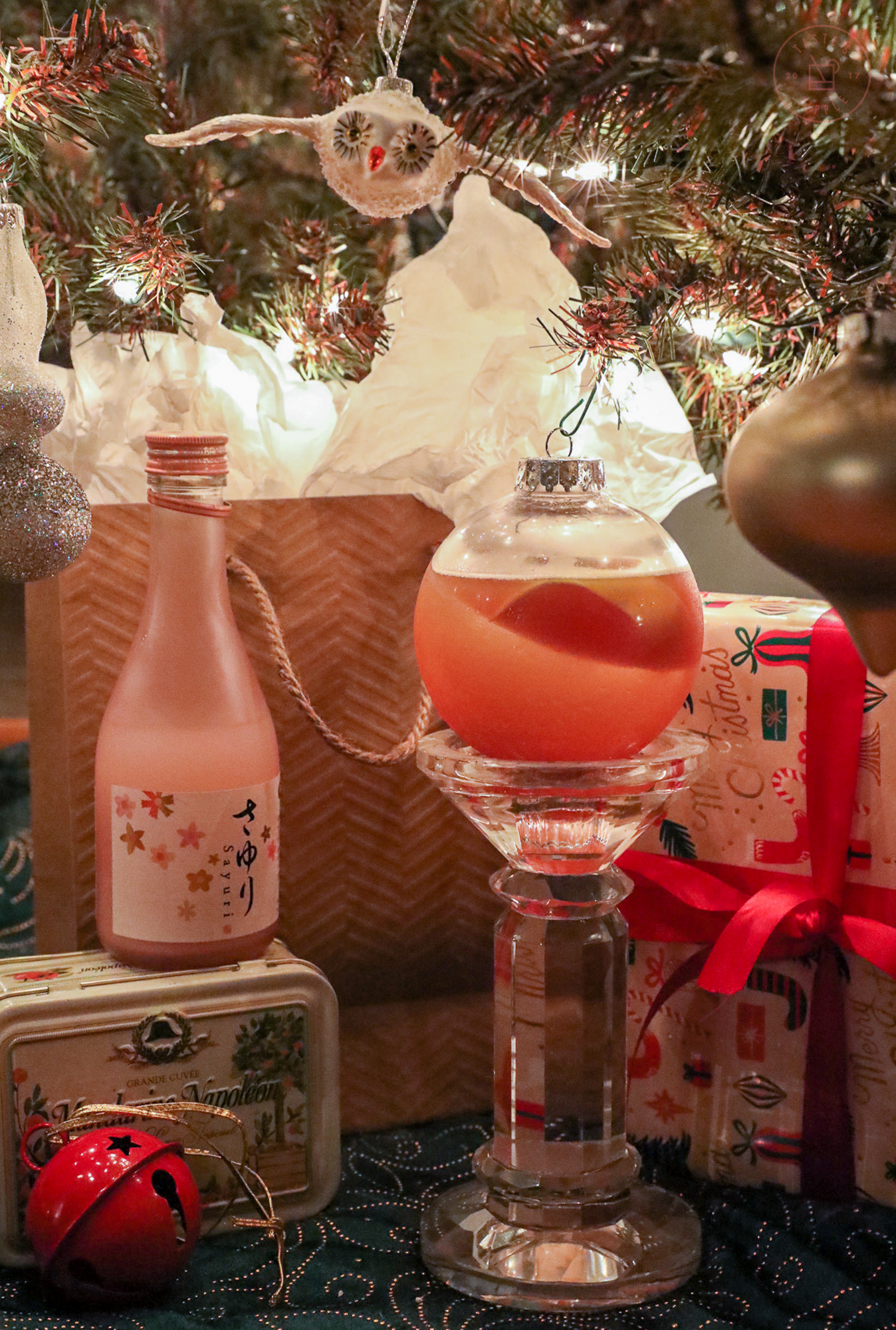
Let’s Get Blitzen: Cocktail Advent Calendar – Day 21 – Ornament Garden. I must say, I think I’m quite clever with this name. Made with Japanese rice wine (Japan where ornamental gardens are popular) and served in an ornament – get it!?
Sake doesn’t regularly appear on the blog but thought I should do something interesting with it for this year’s advent calendar. Sake is made by fermenting rice that has been polished to remove the bran.

Although it’s called Japanese rice wine, sake is produced through a method more akin to brewing; where starch is converted into sugars which ferment into alcohol, whereas in wine, alcohol is produced by fermenting sugar that is naturally present in fruit, typically grapes.
While the process of making sake is more similar to making beer than wine, it is distinct. When making beer, the conversion from starch to sugar and then from sugar to alcohol occurs in two distinct steps. Like other rice wines, when sake is brewed, these conversions occur simultaneously.

It also has a different alcohol content than both beer and wine. Most beer contains 3–9% ABV, wine generally contains 9–16% ABV and undiluted sake contains 18–20% ABV (although this is often cut to about 15% by diluting with water prior to bottling).
By using sake in place of a base spirit that would typically come in at 40% ABV or higher, the Ornament Garden is a low-ABV cocktail.

The rice used for making sake is called saka mai – of which there are at least 80 types in Japan. The grains in these rice varietals are longer and stronger, making them stand up better to extensive polishing intended to get at the starchy heart of the grain. Often up to 60% of the grain is polished off in a process that can take 2-3 days.
The process of making sake is quite complex and more than we have time to explore in full today but there’s a huge range of styles and flavours within sake that range from dry to sweet. Also, different styles are served either warmed, chilled, or at room temperature.

One thing to note is that sake is best consumed within 2-3 hours of opening and should be kept in a dark, cool space or refrigerated. It should be refrigerated after opening and best consumed within 2-3 days after opening but depending on the quality of the product could be very drinkable for weeks if kept refrigerated.
If you haven’t sampled sake in a cocktail application before, I hope you’ll enjoy the Ornament Garden!

Ornament Garden
- 1 ½ oz sake
- ¾ oz Amaro Averna
- 1 oz grapefruit juice
- Garnish: grapefruit twis
-
Add all ingredients to a cocktail shaker and shake over ice until well-chilled. Strain into a rocks glass over ice*.
-
Garnish with grapefruit twist.
To serve in ornament, remove top from shatterproof round ornament and fill the bottom third with water, freeze. Strain directly into ornament.

